Last updated on July 12, 2022

Savai Triome |Illustration by Titus Lunter
It seems like every second week we’re seeing something in Standard getting crushed under the ban hammer. I can speak from experience over the last few months, it doesn’t feel great to see card after card get banned, and your hard earned cash or wildcards go down the toilet (RIP Fires of Invention).
If you can relate, then I’ve got the deck for you. Introducing: 4-rare aggro cycling. The most rotation-proof-iest-safest-craft-iest deck that has ever graced Standard.
The Deck

Zenith Flare | Illustration by Jonas De Ro
I can personally vouch that this deck can go the distance and get you all the way to mythic, and the only rares you’ll need are four Savai Triomes. Aside from these cards, you could probably build this deck out of the chaff box at your LGS!
I’ve made the deck without a sideboard, as these can often be quite expensive. There are, however, some great uncommon options for removal spells if you are set on taking it to BO3.
Welcome to the 4-rare budget Standard cycling deck that can get you to mythic:
Creature (16)
Flourishing Fox x4
Drannith Healer x4
Drannith Stinger x4
Valiant Rescuer x4
Instant (10)
Startling Development x4
Zenith Flare x4
Frostveil Ambush x2
Sorcery (8)
Go for Blood x4
Memory Leak x4
Enchantment (8)
Footfall Crater x4
Reptilian Reflection x4
Land (18)
Mountain x7
Plains x5
Swamp x2
Savai Triome x4
You may have seen earlier versions of this deck in action that used Lurrus of the Dream-Den, shock lands, and a whole bunch of other expensive, errata’ed, rotating options. Well those cards aren’t for us or this deck. That said, if you’re in the high-roller club and wish to upgrade, be our guest!
Deck Goals

Footfall Crater | Illustration by Jenn Ravenna
The goal of our deck is extremely straightforward: go fast, cycle, and win with a big finisher. It’s not your typical aggro deck and may feel very odd to pilot for newer players. We’ll go over the play style shortly, but first let’s take a look at the mechanic itself.
Cycling
From the Comprehensive Rules (June 1, 2020—Ikoria: Lair of Behemoths)
- A keyword ability that lets a card be discarded and replaced with a new card. See rule 702.28, “Cycling.”
For damage dealing, you’ll be using a collection of very cheap creatures, all of which benefit from cycling. Whether it be healing you, pinging our opponent, or making tokens/+1s, each card gives you something for cycling.
The heavy-hitters of the deck are Reptilian Reflection and Zenith Flare, but don’t be surprised if you can inch out eight or more damage from a turn 1 Flourishing Fox.
Reptilian Reflection
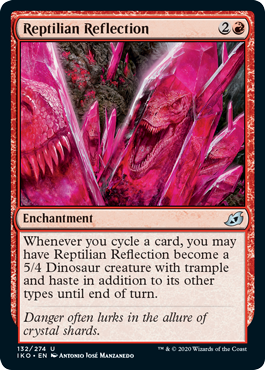
A great way to add firepower to your board which avoids board wipes unless cast on your turn. Works great on curve and late game.
Zenith Flare
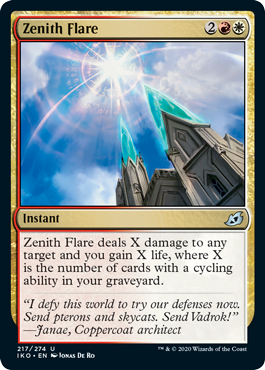
This card wins you the game if you’ve set up correctly, so understanding how to get there is critical.
Mulligans and Early Game

Flourishing Fox | Illustration by Ilse Gort
The perfect starting hands are going to have two lands, a Fox, a Stinger, and cards that cycle for 1 mana. This deck draws so many cards, so you can flood quite easily if you keep a four-lander from the go. An aggressive mulligan to five is totally fine when compared to keeping a bad six-card hand.
The best turn 1 play comes from playing a land and Flourishing Fox. If you find an opener with this, it may be worth keeping even if it’s a one-lander provided you have other cards that cycle for 1 mana. Turn 2 will always give you at least one extra card draw to avoid missing the land drop.
The trap here is to play a threat turn 1 and then follow it up with another threat or tapped land turn 2. If you do happen to keep a one-lander, your game plan should pivot to prioritize cycling rather than further establishing a board presence until you smooth out your mana excess.
In this deck, cycling isn’t “wasting” mana but rather investing into your payoff in a later turn. Each cycling card that enters your graveyard is future damage for your Zenith Flare and digs you one card deeper to it.
You’ll notice that almost every card in the deck has cycling for 1 generic mana. This is critical to feeding your engine as you want to be able to cycle as many cards as quickly as possible. The notable exceptions are Reptilian Reflection, Zenith Flare, Valiant Rescuer, and Savai Triome. And basic lands, obviously.
The Perfect Run Out

Reptilian Reflection | Illustration by Antonio José Manzanedo
Turn 1: Land, Flourishing Fox: 0 Total Damage
Turn 2: Land, Drannith Stinger, Attack for 1 damage: 1 Total Damage
Turn 3: Land, Cycle, Cycle, Cycle, Attack for 9 damage: 10 Total Damage
Turn 4: Land, Cycle, Cycle, Attack for 10 damage: 20 Total Damage
Obviously, this can’t be reliably executed every game, but only the Stinger and Fox are needed to achieve it. If your opponent has creatures or removal, our game plan derails pretty fast.
This example is purely to show how quickly the damage can stack up. Our 1/1 Foxes become 4/4s often enough and a Drannith Stinger can easily do six damage over three turns without attacking.
Cycling Order
There’s a specific order you should cycle cards from your hand. Let’s talk about that.
Unimportant
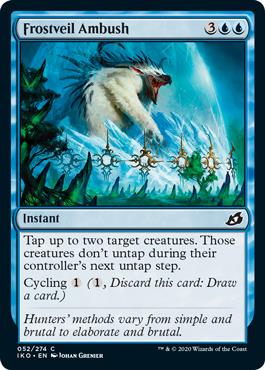
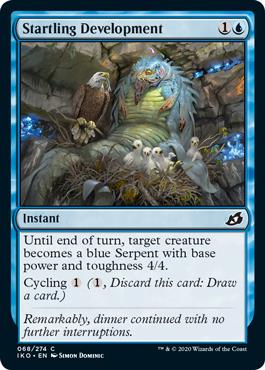
You can never hardcast these, so your blue cards in hand should be the first cards you cycle.
Mostly Unimportant

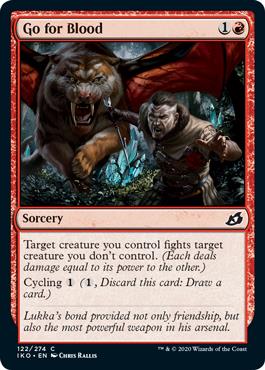
90% of the time you won’t hardcast these cards, but you can due to color access. Occasionally fighting a creature with your Fox means you can do more damage to face. Don’t fall into the trap of casting your Craters on curve as they’re much better in your graveyard 90% of the time.
Somewhat Important
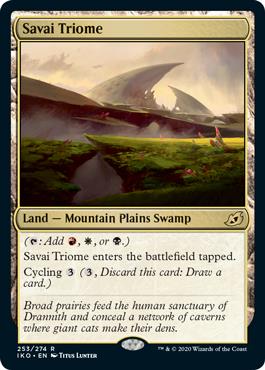

Savai Triome is expensive to cycle but much better than flooding when we have nine mana.
Memory Leak is hand disruption with cycling. While it’s well over-costed when compared to something like Agonizing Remorse, you have the option to cycle or hand disrupt, and this flexibility gives you utility when going up against control decks.
Often this card can straight up eat or take the place of the counterspell your control opponent was saving for your Zenith Flare. This card will mostly be cycled, but in some matchups can be the MVP.
Important
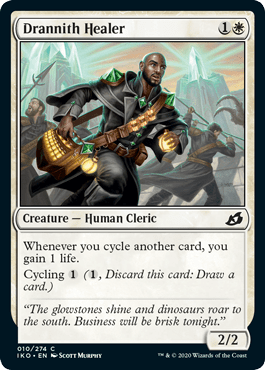

These cards are often the hardest to determine the appropriate action with. A common situation sees you having one in hand turns 3 or 4 with a few threats already committed to the board.
It may appear at first that playing them is the better bet when you’re against any deck that isn’t running board wipes or relevant removal. The question actually becomes more difficult when you have to determine the clock.
Very Important

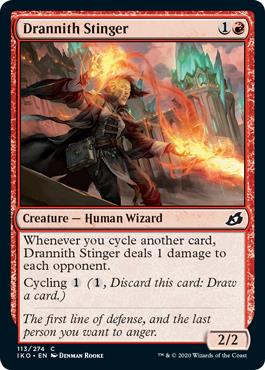
An instant cast every time on turn 1 and 2, but when drawn mid-game it can be quite challenging.
My rule for Flourishing Fox when we’ve passed turn 3 is somewhat straight forward. Can the Fox speed up the win? If so, I want to cast it. Most of the time when we do the math though, the answer is no, it doesn’t. Getting us a card closer to Zenith Flare or triggering a Reptilian Reflection is much more relevant more often than not.
Drannith Stinger is even more difficult to figure out the right play. In the mid-game, you’ll often run out of steam if you suffer from a board wipe or a countered Zenith Flare, so 90% of the time I’m not going to commit a Drannith Stinger (or the a second one in some circumstances) to the board unless it gets me the win that turn.
Despite being one of the best cards in the deck, you may find it more valuable to dig. It’s not uncommon for both you and your opponent to have one or two cards in hand and be looking for the win off the top. So, the extra draws can very often play out.
Matchups
Control

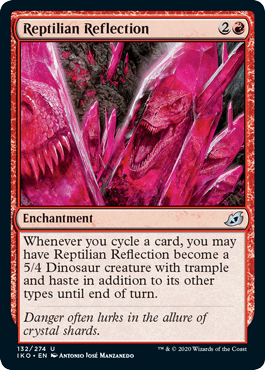
Your most feared card is Narset, Parter of Veils as you’re capped to drawing one card on your turn, one card on your opponent’s. This can be overcome by giving your creatures trample with Footfall Crater, but it’s going to be tricky to get around. Go fast and don’t fear the board wipes. Your Reptilian Reflection will do work in this matchup.
Midrange
You mostly want to ensure you don’t get blown out by overcommitting creatures to the board and running out of steam. The way you lose these matches is by having a bunch of 2/2’s you’re forced to chump block with and flood on land (thus, no cycling). Winning this matchup requires you to weigh up your options when committing creatures.
Aggro



This matchup sees you relying more on your healing to extend the game. If you manage to get a Flourishing Fox above 4/4 it will make for a potent blocker. Drannith Healer becomes more important in this match, and Zenith Flare will win you the game every time.
Piloting Tips
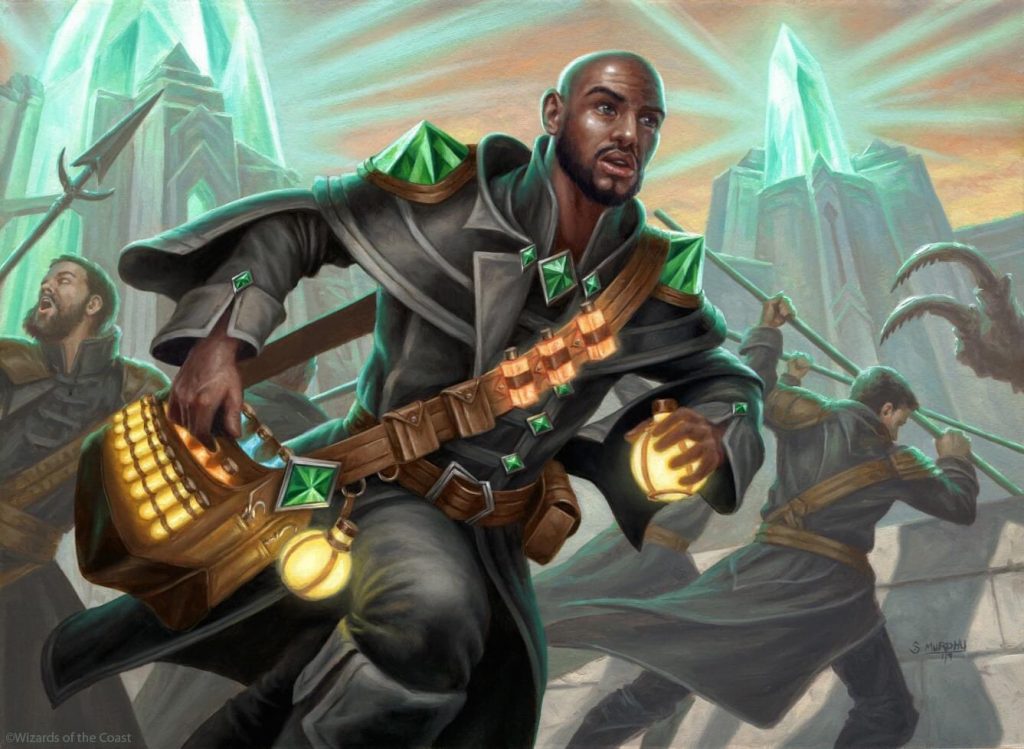
Drannith Healer | Illustration by Scott Murphy
Life count versus Zenith Flare. Always pay attention to whether a Zenith Flare off the top will give you lethal. This should influence all of your decisions once you reach the mid-game. It’s not uncommon to have an opponent at 7 to 10 life with 12 cycling cards in your graveyard.
This deck has a significant amount of healing, so you’ll almost never be interested in taking blocks. Saving your creatures for your opponent’s face is far more important.
Board wipes or removal spells that destroy your threats actually pump up your graveyards unless they exile. Don’t forget to consider this when determining what your board commitment looks like or whether a wipe changes the clock for your opponent.
If you don’t have a Flourishing Fox in hand for turn 1, you should still cycle a card if you can. The exception being a 2-drop threat if it’s the only one in your hand. It digs you a card deeper into the deck and feeds your Zenith Flares. Always do this.
When piloting the deck, you should always consider how many cards deep you are into the deck. Because you’re drawing so many cards, you want to actively monitor the likelihood of drawing a Zenith Flare or other win con.
Something that’s particularly useful for this deck is using a deck tracker like Arena Tutor, which monitors the number of cards (and which ones) you have in your deck and gives the percentage of drawing a particular card. I often find myself mid-game with six or seven mana open and knowing that I’ve got three chances to draw a card at 14% each time is super valuable. You’ll often get below 30 cards in your deck, so knowing the probability is awesome when making decisions.
Wrap Up
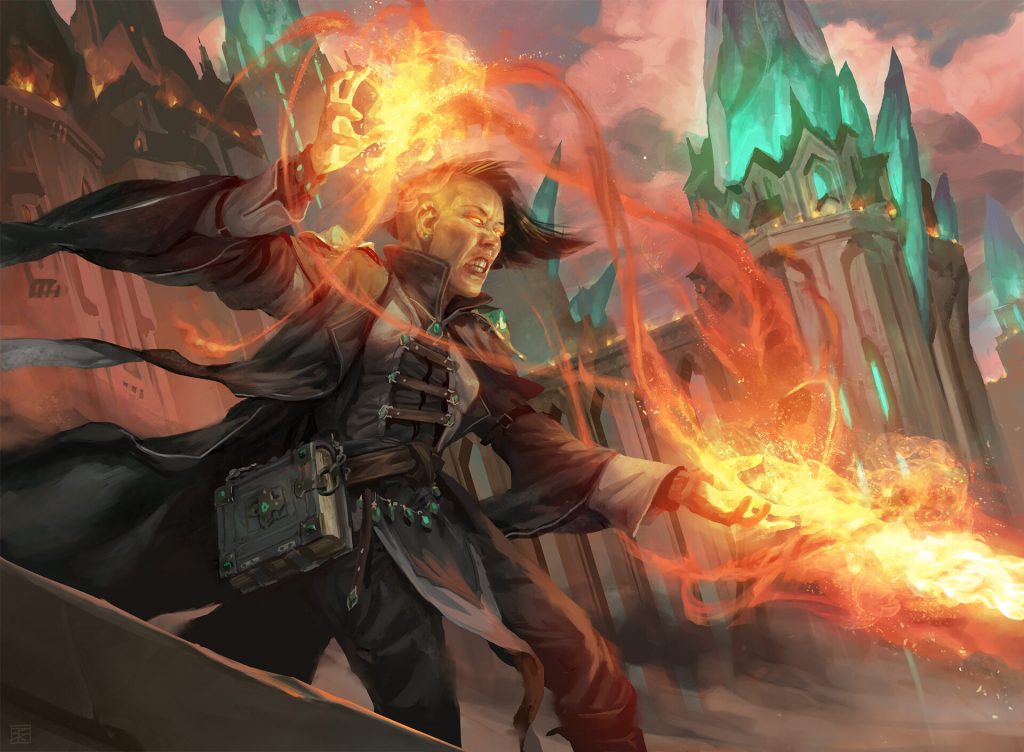
Drannith Stinger | Illustration by Denman Rooke
This deck is incredibly good given its cost. If you’re looking for a cheap, rotation-proof way to play Magic while you grind out dailies or are interested in having a crack at Standard with cardboard, this deck is hands down the very best option.
There are some reasonable upgrades that will make the deck even stronger without breaking the bank if you find yourself looking to power it up with some more premium land or sideboard tech. See you on the ladder!
Follow Draftsim for awesome articles and set updates: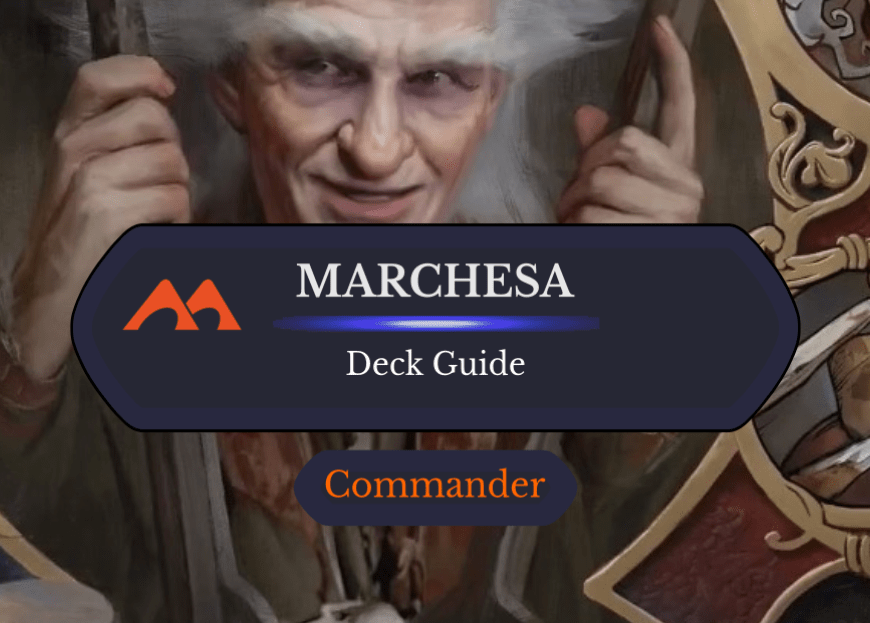
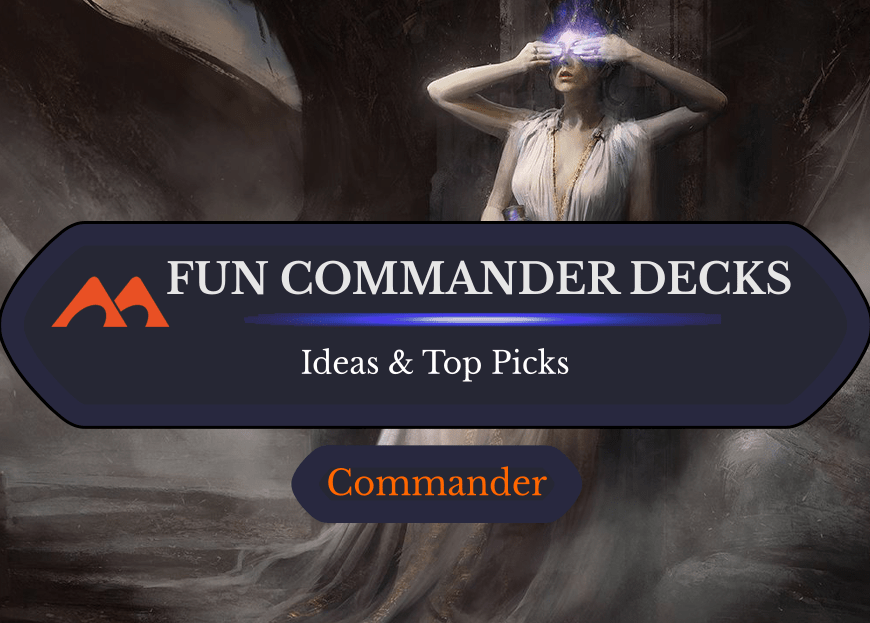
3 Comments
Hi! I’m a F2P player and I love this deck, u say its a good investment of all my wildcards?
Thanks!
I might defer to the author on this one but I suspect that it is a reasonably competitive deck, but I doubt you are going to be smashing tier 1 decks with it unless the metagame is very specific. That said, I don’t think you’re going to find a better combination of power vs. the amount of rare/mythic wildcards that you have to invest anywhere else.
Thanks! I think I’m going this way. Anyways I’m not a regular player, so this would be enough for some fun
Add Comment